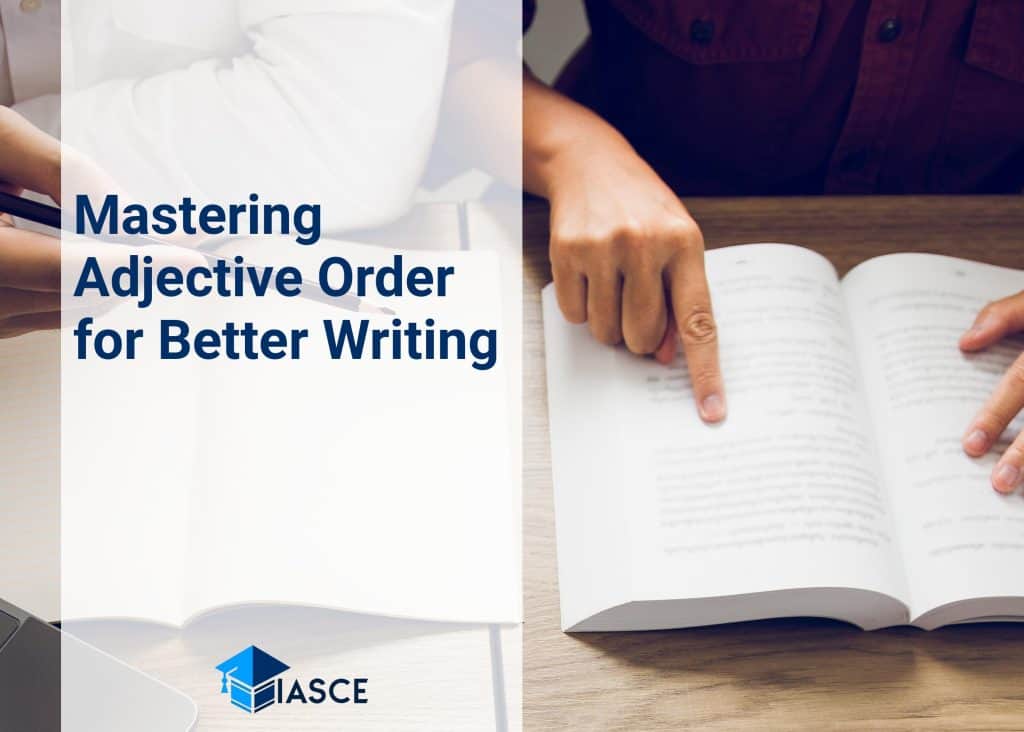If you’ve ever found yourself fumbling over the correct order of adjectives in a sentence, I’m here to help! Mastering the order of adjectives can be a game-changer in your English language journey. It’s not just about sounding right; it’s about conveying your thoughts and ideas effectively.
In my comprehensive guide, I’ll share with you the golden rules for arranging adjectives, turning what may seem like random placement into an organized system. Don’t worry if you’re feeling overwhelmed already — we’ll break each rule down simply and clearly.
So sit back, relax, and let’s dive into the world of adjective order. Trust me, by the end of this guide, you’ll have nailed down this essential grammar skill like a pro!
Understanding the Basics of Adjectives
Diving headfirst into the realm of English language, it’s crucial to comprehend one of its fundamental building blocks – adjectives. Acting as descriptive words, adjectives add flavor and detail to our sentences by modifying nouns or pronouns. They answer questions like what kind? how many? and which one?
I believe it’s essential for anyone learning English grammar to grasp the concept of adjectives thoroughly. Not only do they enrich our expressions, but they also serve as a key player in sentence construction.
Before we delve any deeper, let’s observe some everyday examples:
|
Noun |
Adjective |
|---|---|
|
Dog |
Playful |
|
Book |
Interesting |
|
House |
Large |
In these instances, each adjective offers additional context about the noun it modifies – a playful dog suggests an energetic animal; an interesting book implies engaging content; a large house indicates spacious living quarters.
But what happens when we have multiple adjectives in a sentence? That’s where the order of adjectives comes into play—a topic I’ll discuss comprehensively later on.
Now you’ve got your toes wet with the basics. You understand that adjectives are descriptors that add depth and detail to your sentences. And you’ve glimpsed their vital role in shaping our communication. But remember: mastering adjectives doesn’t happen overnight! It requires practice and patience—so don’t rush yourself.
And while this may seem like a lot to take in at first glance, I promise you—it’ll all start making sense as we delve deeper into these fascinating linguistic elements. So buckle up because there’s plenty more knowledge awaiting us!
Steps to Master the Order of Adjectives
Mastering the order of adjectives can feel like a daunting task, but I’m here to guide you through it. With a little patience and practice, you’ll be able to use adjectives confidently in your writing.
Firstly, let’s understand what an adjective is. An adjective describes or modifies a noun. Simple enough, right? But when we have more than one adjective before a noun, things get a bit tricky.
Here’s my straightforward guideline: start with the opinion or observation (lovely, boring), then size (huge, tiny), followed by physical quality (rough, smooth), shape (round square), age (young old), color (red blue), origin (French American) nationality(English Swedish) and material(linen cotton). It’s not hard and fast rule but mostly we follow this sequence. Let me show you an example:
|
Correct Order |
Incorrect Order |
|---|---|
|
A lovely big old round red English cotton hat |
A red English cotton big lovely old round hat |
Notice how clumsy and confusing the incorrect order sounds? That’s why it’s crucial to know the correct order.
Remember that not every noun will require all these types of adjectives. Most sentences will only need two or three at most.
For instance:
-
I bought some amazing new black Italian leather shoes.
-
She has long curly brown hair.
In these examples “amazing new black Italian leather” are adjectives describing “shoes”, while “long curly brown” are modifying “hair”.
A great way for practicing is by reading extensively. Pay attention to how authors use multiple adjectives before a noun – you’ll notice they adhere to this specific order almost instinctively!
Lastly don’t forget about commas! When using multiple coordinate adjectives — those that independently modify a noun—use commas between them.
For instance:
-
He wore an ugly,baggy green sweater.
But when the consecutive adjectives qualitatively change meaning without comma,
-
He was carrying heavy leather bag.
In second sentence ‘heavy’ describes ‘leather bag’ as whole unit unlike first scenario where both ‘ugly’ and ‘baggy’ separately describe ‘sweater’.
I hope this brief journey into mastering adjective order has been helpful! Remember: practice makes perfect—don’t rush yourself!
Conclusion: Becoming Proficient in Adjective Ordering
Mastering the order of adjectives isn’t a feat accomplished overnight. But, with consistent practice and careful attention to detail, I’m confident you’ll start seeing improvement in no time.
Struggling at first is perfectly normal. Like anything new, it’s going to feel foreign and unfamiliar. However, remember that each mistake is a stepping stone towards proficiency. You’re learning better English grammar and expanding your linguistic capabilities — that’s something to be proud of!
Here are some valuable tips for your journey:
-
Practice regularly: Write sentences using multiple adjectives.
-
Read extensively: Exposure to well-written content helps internalize correct adjective order.
-
Use mnemonic devices: They can assist you in remembering the sequence more easily.
Lastly, don’t forget the guiding principle—opinion before fact when ordering adjectives. This rule will take you far in achieving proper syntax in your written and spoken English.
Just as Rome wasn’t built in a day, mastery over any language aspect takes time and patience. So keep practicing until ordering adjectives becomes second nature.
Savor this process of learning—it’s not just about reaching the destination but also appreciating each milestone along the way!

